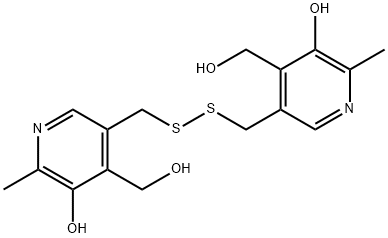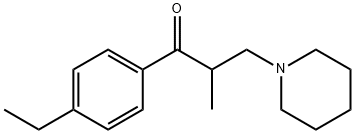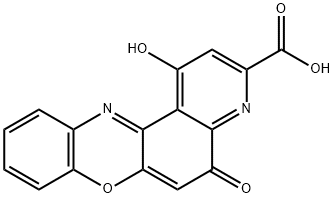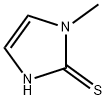PRODUCT Properties
| Melting point: | 218-220° |
| Boiling point: | 742.8±60.0 °C(Predicted) |
| Density | 1.448±0.06 g/cm3(Predicted) |
| storage temp. | Keep in dark place,Inert atmosphere,Room temperature |
| solubility | Soluble in DMSO |
| pka | 9.31±0.10(Predicted) |
| color | White to Light yellow to Light orange |
| Merck | 14,7996 |
| InChI | InChI=1S/C16H20N2O4S2/c1-9-15(21)13(5-19)11(3-17-9)7-23-24-8-12-4-18-10(2)16(22)14(12)6-20/h3-4,19-22H,5-8H2,1-2H3 |
| InChIKey | SIXLXDIJGIWWFU-UHFFFAOYSA-N |
| SMILES | S(CC1=C(CO)C(O)=C(C)N=C1)SCC1=C(CO)C(O)=C(C)N=C1 |
| CAS DataBase Reference | 1098-97-1(CAS DataBase Reference) |
Description and Uses
Pyritinol, the disulfide of pyridoxine-5-thiol, is marketed as a cerebral stimulant in Europe. Both the thiol and the disulfide have been shown to have d-penicillamine-like activity in the treatment of rheumatoid arthritis. Adverse effects are similar to those seen with d-penicillamine. Occasionally, pyritinol seems effective and better tolerated in some individuals who fail to respond to d-penicillamine.
Pyritinol can be used as a nootropic used in the prevention and treatment of cerebrovascular diseases.
Safety
| Symbol(GHS) |   GHS05,GHS07 |
| Signal word | Danger |
| Hazard statements | H315-H318-H335 |
| Precautionary statements | P261-P280-P305+P351+P338 |
| Hazard Codes | Xi |
| Risk Statements | 36/37/38 |
| Safety Statements | 26 |
| WGK Germany | 2 |
| RTECS | UT4836666 |
| HS Code | 2936.25.0000 |






